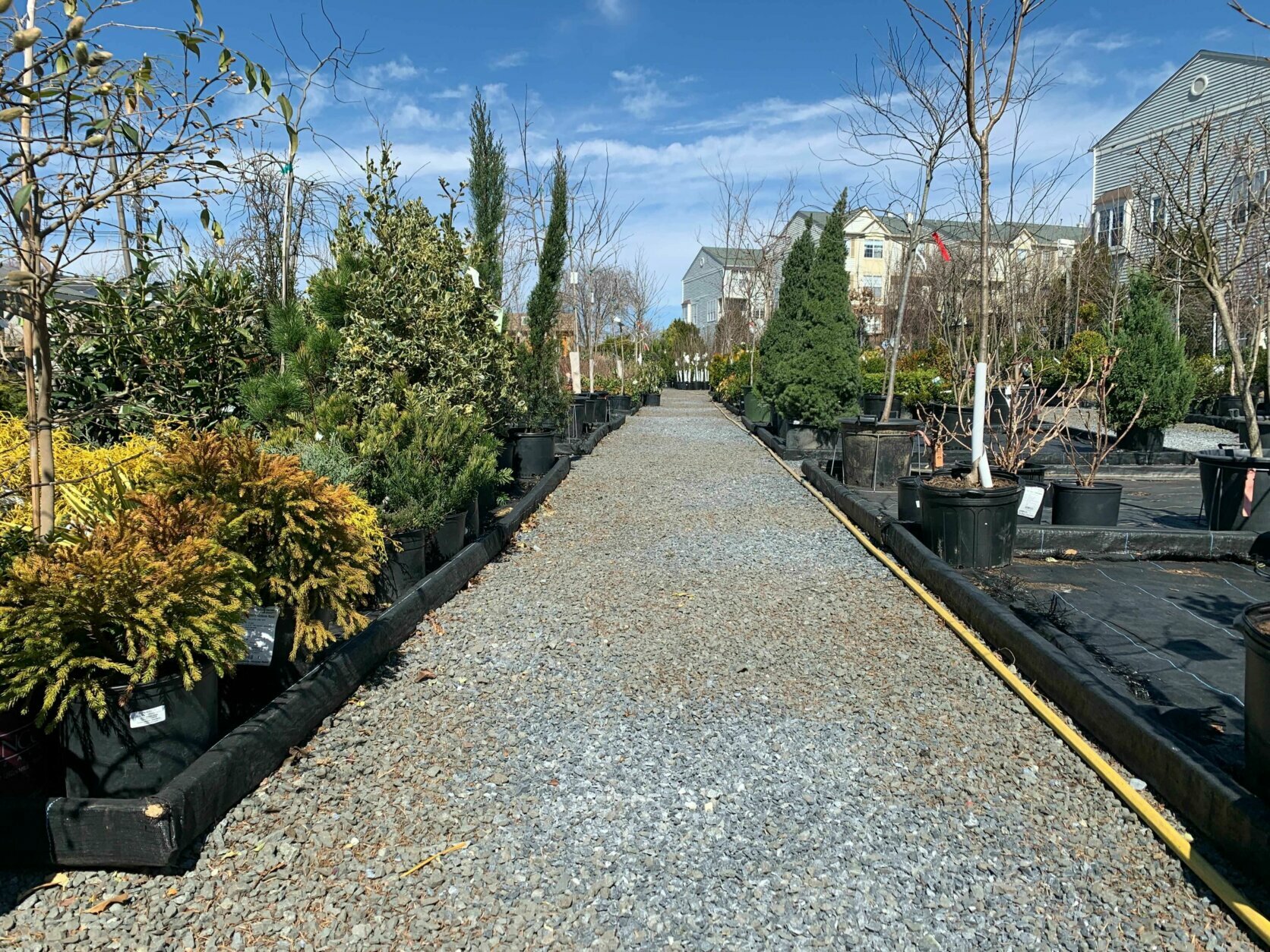Ah…that old chestnut!
But designer-turned-garden-star Lucy Hutchings posing the question to chef and Arctic adventurer Mike Keen was serendipitous.
In 2017 she’d begun a mission to grow as much as she possibly could in her teensy back garden – and, surprisingly, turned out to be quite a dab hand at horticulture. As well as providing food and nourishment, the veritable jungle taking over her modest plot posed a bit of a quandary. How on earth was she going to cook the hundreds of decorative heirloom tomatoes and beautifully mottle-skinned beans she’d glutted?

Mike (who’d run her favourite pub, The Freston Boot) answered her plea for help, and the couple have been together since, carving out a new life in the country, at Cedarwood Homestead in Holton St Mary.
When I visit, on a blustery autumnal morning, it’s clear there’s still work to be done. But my God the amount they’ve achieved so far, renovating what was essentially a falling-down-wreck, is absolutely astonishing. Mike admits he’d struggled to put a shelf up before they took on the property and its sprawling garden almost exactly a year ago. Now he can turn his hand to anything from plumbing to plastering.
“Sorry about the mess,” Lucy smiles apologetically as she ushers me through the door. There is no mess – just an unfinished hallway.
I’m led into the kitchen, where Mike cradles a Kilner jar muddied by a batch of experimental acorn coffee (“it tastes pretty much like the real thing”). Dalmation pup Milo laps excitedly at his feet.
The kitchen is a real feat for the couple. With its slick country-style units, and oversized headspace, it feels like it’s been made for modern living. But the finishing touches prove it’s not a space for posturing on social media. This is the genuine engine room/hub of their lives. The dining table, strewn with spent coffee cups and books, looks out across the garden. A snug corner hides a sofa. Cupboards and drawer units have been found on their travels, each piece warmly weathered by the hands of previous owners.
It is a culinary apothecary, where bottles and jars gleam from the shelves, their jewel-coloured innards showcasing Mike’s forays into preserving and fermenting. “The dried tomato powder is amazing,” Lucy tells me, getting a brew on.
If I’d just spent the best part of a year building a house from the ground up, starting a Youtube channel, or paddling under my own steam on a kayak in Greenland, evading dangerous iceberg calves, I think I’d be content hibernating over winter.
Not so where these two are concerned. Behind the scenes, when they’re not vlogging or filling their social feeds with technicolour veg, Lucy and Mike are working on the next stage of Cedarwood Homestead – the true purpose of the blood, sweat and tears ‘Good Life’ project. Because, as well as a family home for the couple and Lucy’s two young children, this place has to earn them a living. A sustainable, manageable living though. One that seamlessly weaves together their shared passions.
They’re running small class courses on a vast range of topics from the site.
And Mike has built his own barbecue and smoker in the garden alongside what he calls an ‘arena’, facing a dilapidated pig shed. At the moment it’s a semi-circular mound of earth and some wood, but eventually he’ll have a professional kitchen for classes here, and will offer outdoor demonstrations and moonlit supper clubs, which all sounds rather romantic…more on that later.
Lucy, author of Get Up And Grow, turned to gardening at a tumultuous time in her life. She’d left the fashion industry as a jewellery designer, deciding it was no longer for her, and went on to have her daughters. In 2017 says she was at a low point. Throwing herself into the hobby proved welcome solace.
“I was growing plants that were pretty. But they had to be edible as well,” she says of the early days. “Somewhere down the line I started to deep dive into forgotten edibles and ornamentals you can eat, and heritage things. The kind of vegetables the Victorians were crazy about, but that we don’t eat anymore.
“My sister was like ‘you should go on Instagram’. I started an account (@shegrowsveg) without any kind of agenda [she now has more than 160,000 followers]. Basically, I wasn’t buying or using gardening books. I was trying interesting things, and growing plants in different places and at different times of year. Probably people liked it because I was a designer and I was able to take photographs that grabbed their attention.”
In 2019, living amongst piles of veg, Lucy reached out to Mike. “I had no idea he’d left The Boot by then,” she chuckles. “But I did manage to get in in touch with him. I was like ‘I grow loads of really weird stuff no one knows how to eat – do you want to cook it and make some videos together?’.”
The rest is history.
“We definitely shared the same dream,” Lucy smiles at Mike, who nods in agreement.
That dream was to be as self-sufficient as possible. Something both of them feel is prescient – especially Mike, who has witnessed first-hand on his travels the way preserving, feeding from the fat of the land, and being creative in and conscious in the kitchen, is so much more prevalent outside of the UK.
In a something-or-nothing move, having been tied to restaurants for years, when he gave up The Boot, Mike decided it was time to do something purely for himself.
“I’d started on a fermentation journey a few years before, looking at all sorts, but for the weirder stuff I had to look to the Arctic region. I was pitching a book, and the publishers said I had to get some sexy Vikings in to make it commercial, basically,” he laughs.
Mike has spent months travelling in Denmark, the Faroes, Iceland and Greenland, dining on the likes of smoked seal fat.
“It made me think a lot about the food culture here,” he says. “Post-World War Two only 3% of people had an electric fridge. What were they doing before then? We can’t imagine it can we? We’ve got to the stage where people are throwing away bread as soon as it’s got a bit of mould on it. Seventy years ago we would have done something with stale bread or curdling milk.”
Lucy agrees. “We’re so dependent on supermarkets. At the beginning of the pandemic when the shelves were empty it was a shock. Our food security was threatened. Now food prices and fuel prices are going up, that’s out of our control. I think more people are starting to think about growing some of their food to take back a bit of that control. That’s what we can show them here.”
The pair bought Cedarwood a year ago, despite warnings from the estate agent about its horrendous condition. It was so bad they refused to do viewings. But the bones of the plot had everything the couple wanted. Land, a view of the countryside, no overlooking neighbours, and space to grow.
It slipped through their fingers a few times, but when the house fortuitously came back on the market, Lucy immediately called Mike (who was on the sea in a kayak) to ask him: “Shall we go for it?”
Dating back to the 40s, the wooden kit house was built by a farmer across the way and had been a much-loved family home until recent years.
“When we went inside the ceiling was caving in,” says Lucy. “There was rainwater on the floor, no carpet because the carpet moth had eaten it all, and it stank because animals had got in.”

It took a lot of foresight to imagine a future for the place. But they weren’t deterred. The rose-tinted glasses were very firmly on.
“It had everything,” Lucy adds. “We knew we didn’t really have a budget to do what we wanted to, but thought we’d figure it out.”
Pretty soon into the renovation Mike says the price of building materials doubled. “The cost went absolutely through the roof. We had to make the decision to stop all tradesmen when it was a waterproof shell.”



Armed with limited knowledge and a list of Youtube links, they became their own labourers. “You have to learn very quickly,” Mike admits. “Doing the insulation was the worst. And plaster boarding the ceilings. We did that, and plastering, installing the kitchen and bathrooms, external plumbing and waste systems, the cladding, the patio, bricklaying, all the decoration.”
Mike and Lucy even made their own kitchen worktops. What stands today is a warm, bright four-bedroom, three-bathroom home bearing no resemblance to the tumbledown shack that came before.
We pull on our coats and step from the kitchen to the garden – Mike proudly pointing out a barbecue he’s made, topped with huge swinging grills.
Ducks, including a shimmering purple exotic Cayego, waddle in a fruit cage filled with currants, gooseberries, jostaberries, raspberries, aronia berries and Japanese wineberries. Lucy has plans for more fruit trees and shrubs, especially over in the orchard, which struggled in the hot summer. “You can never have too much fruit can you?”
The centrepiece of the outdoor area is a series of intricate beds, set out in the pattern of a Victorian kitchen garden, and Lucy has strong feelings about the way it’s been planted.

“I wanted it to be really beautiful. To show an ornamental garden can be almost 100% edible. I’ve never understood why there’s such a big divide between traditional kitchen and ornamental gardens. There’s actually no difference between them.”

At the moment the earth swells with onions, garlic, shallots, winter wheat, leeks, radicchio, salsify and beetroot.
Trying to establish plants in one of the hottest summers on record proved tricky. “I got to the point where I had to pick and choose what was worth watering. But tropical fruit did well in the polytunnel. We had pomegranates, loads of watermelons…and tomatoes, chillies and peppers too.”
We navigate our way around a sprawling patch of giant pumpkins, which spring forth from the grass, their green skins knobbly, appearing other-worldly, like they’ve been pulled up from a swamp in a Grimm fairy tale.

In fact, many of the things Lucy grows are unrecognisable to the layperson. A peep in their root cellar, decorated by Lucy Tiffany, who spent a week painting a cheery mural in Cedarwood’s kitchen, showcases a wonderful ‘freak show’ of gourds of every colour, shape and size.
As Mike scratches his head, wondering how he’s going to shift all the green giants, Lucy draws open the polytunnel, where we’re overcome by a welcome whoosh of heat.
“It’s hot all-year-round,” she says, shifting two sword-length giant loofah fruits out the way. “It’s not heated. In mid-winter last year when our fingers were numb we’d come in here, strip off our jumpers and eat lunch!”
Nothing Lucy does is conventional. But everything, bar the loofahs which are destinated to become handy cleaning sponges, is grown for flavour above all else.
Baby pomegranates, Chinese snake gourd and finger limes are intercropped with kale and kohlrabi. Then there are the tomatoes. Lots of tomatoes. Lucy’s glossy portraits of the fruits are likely one of the reasons she has managed to amass such a following on social media.
Some are scarlet red, the size of a button. Others the shade of a purply-black bruised night sky. There are varieties which slice open to reveal an almost kaleidoscopic disco of colours.

“My top three are always Black Beauty which is a jet-black tomato that is very beautiful but also really, really tasty. Ananas Noir is brilliant yellow and green on the outside, but inside has a burst of red, yellow, orange and green. And Pink Berkeley Tie Dye has a tie dye effect inside. They all taste incredible.”
Seeds for many of the varieties grown on at Cedarwood are available to buy now on Mike and Lucy’s website cedarwoodhomestead.com – it’s hard, from commercial growers, to find genuine heirloom seeds, she says.
“Our website is a place you can come for a kind of one-stop-shop of all the things we really swear by. You’ve got our tomato seeds, mushroom plugs, cookware, smokers, the self-watering pots I use in the greenhouses. It’s all really carefully curated. They are things we actually use and are happy to recommend.”
A hop and a skip from the tropical climes of the polytunnel is a huge paddock where Lucy and Mike’s five pygmy goats bound, leap and trot playfully. They are, Lucy points out, for fun, not for eating!
“We absolutely love them. They’re like little dogs. They’re hilarious and have so much personality.”
They started out with two, Wolf and Bear.
“We’d gone to pick up an old bomb shelter to make the root cellar, says Lucy, “and on the way back someone said ‘I’m in Harrogate, I’ve got two goats, do you want them?’ So we came back with the shelter and the goats. It was our strangest day of impulse shopping!”
Three new babies have been added to the gang – Shamus, Biscuit and Bear. “They’re clever,” adds Mike. “They managed to break out and get into the root cellar. We’ve got no idea how.”
Next Mike shows me his ‘arena’ and pig sheds
“Turning our dream into a business was always part of the picture,” he says, directing me to the smoker he’s built, tunnelled under a mound.
“There’s a fair bit of work to be done here. I’m going to make a tandoor oven, and put in a pizza oven and barbecue here, maybe a pit, so we can do all sorts of outdoor cooking.
“When the pig shed is done we’ll transfer most of the courses into there with hands-on cooking stations, and we’ll let it out for photography and food development. It’s going to give us a lot more scope.”

Mike can’t wait to, when the weather’s better next year, get back on the stoves, bringing pop-up foodie events to the area.
“The bit I love about restaurants is that buzz on a Saturday night when the tickets come in, and being creative. Here we can get a bit of music going, and theme some events. We might do classic pub dishes one night, or an evening of hot and cold smoked food. There’s no end to what we can create really.”
“But,” adds Lucy, “we do want to keep people tied to the garden. When we have a glut we will use it for the events. The way we are set up means people can see where our ingredients are grown, see them being picked, then cooked, and eat them. It’s a nice circle.”
In addition to their shop and upcoming suppers and food events, a growing part of Lucy and Mike’s new self-made careers, is content creation.
They are regularly producing videos for their Youtube channel, where viewers can take advantage of the wealth of knowledge they’ve amassed on their journey, from when and where to plant tomatoes, to what to do with a glut of courgettes, or how to make that ‘very interesting’ acorn coffee.

“We wanted to create a TV show we wish we could watch,” says Lucy. “What we’re doing here is so unique. Not many people are doing it and there’s so much to it. From initially putting seeds in, to tending to plants, to cooking. We felt Instagram limited us. We could just scratch the surface in terms of what we’re doing – Youtube was the next logical step.”
The videos are around 10 minutes each. “Some will be Lucy in the garden, maybe showing how to transition a polytunnel from summer to winter,” Mike explains. “Then you might have me showing how to make a passata from raw tomatoes, or building a cobb oven, or pressure canning.”

And these snapshots segue nicely into the couple’s courses.
“One will be spending the morning with Lucy learning about different tomatoes, the seeds and growth habits, what grows best, how to propagate and prune. Then people will spend about two or three hours in the kitchen learning how to make pasta sauce and pizza sauce, how to roast tomatoes, how to dehydrate them and freeze them. They’ll have a muffin and coffee when they get here in the morning, and three or four dishes of tomato-based loveliness in the afternoon.”
“Another one,” says Lucy, “is talking people through how to plant a garden to provide homegrown food all the way through the year, from crops to grow in summer to eat in winter, to what to grow in winter and how to preserve. We’re too reliant on freezing in this country. Mike will show how to dry, cure, smoke and ferment.”
“This place has opened a lot of options up for us,” Mike beams, surveying the kitchen, built with their own fair hands.
“I’ve not regretted one moment,” Lucy grins. “We just can’t believe we’ve done this and we live here. The novelty hasn’t worn off. We love it.”
Keep an eye out for Lucy and Mike’s up-coming TV appearance. They have to remain tight-lipped about the project, but say it will definitely be worth the wait.









